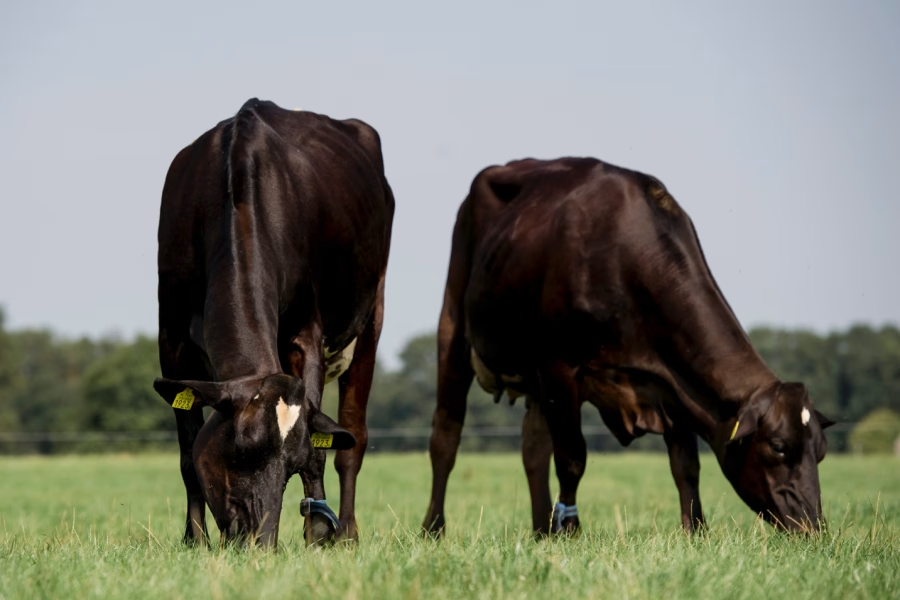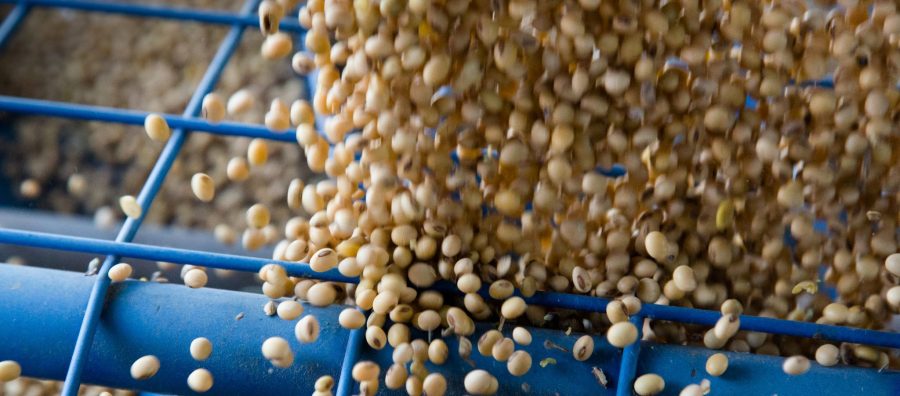Uncover the influence of heat stress on milk quality in Holstein and Brown Swiss cows. Delve into the pioneering research that highlights the variations in milk microbiota between these breeds.

Have you ever considered the impact of heat stress on dairy cows and their milk? Our groundbreaking studies offer new insights, revealing distinct responses to heat stress between Holsteins and Brown Swiss cows. This research, the first of its kind, is crucial for both dairy producers and consumers, as it sheds light on how high temperatures can affect milk bacteria, thereby influencing milk quality.
The scientists behind this study underscore the practical implications of their findings. They reveal distinct responses to heat stress between Holstein and Brown Swiss cows, particularly in relation to the bacteria in their milk. They stress that improving animal welfare and milk quality in the face of climate change hinges on understanding these variations.
Linking these variations to the bacterial communities in milk, the research investigates how high temperatures impact milk output, fat, protein, and casein content. This paves the path for focused techniques for controlling heat stress and guaranteeing premium milk output.
Beyond Animal Welfare: The Economic and Quality Toll of Heat Stress on Dairy Farming
Dairy cow heat stress affects milk quality and farmers’ way of life. High temperatures decrease milk quality and lower feed intake and output, posing major financial problems. Its impact on milk bacteria is an often disregarded factor that might aggravate milk deterioration and mastitis, an expensive mammary gland illness.
Though it’s crucial, little study has been done on how heat stress changes the bacteria population in milk. Shelf life, safety, and nutritional quality depend on milk bacteria. Changes in these bacteria may cause mastitis and more spoiling, influencing animal health and farm economics.
Little was known historically about the variations in milk microbiota across dairy cow breeds in response to heat stress. This information vacuum has hampered efforts to create plans of action to counteract the negative consequences of heat stress.
The research findings have the potential to revolutionize dairy farming. By enabling farmers to use breed-specific techniques, they could maximize milk output during heat waves. Moreover, this research could guide breeding initiatives to enhance cows’ thermal stress tolerance, leading to more sustainable and profitable dairy production.
Controlled Thermal Trials: A Methodical Approach to Investigate Heat Stress Impact
The research strategy was meticulously designed to probe the complex impacts of heat stress on the milk microbiota of Holsteins and Brown Swiss cows. This innovative study was conducted in cooperation with the University of Milan, the University of Bari, and the Institute of Agricultural Biology and Biotechnology housed at the National Study Council of Italy in summer 2022.
Set in a Southern Italian commercial dairy farm, the experiment controlled heat conditions by turning off the barn’s cooling system for four days and then reactivating it. Data loggers placed at the cows’ head height correctly tracked temperature and humidity, thereby nearly replacing their natural surroundings.
Reared under the same conditions, forty cows—equally split between 20 Holsteins and 20 Brown Swiss—were Along with a thorough investigation of the milk bacteria under both heat stress and standard settings, researchers gathered milk samples during morning and afternoon milking sessions to examine the effect of heat stress on production metrics including milk output, fat, protein, and casein content.
Heat Stress Divergently Influences Milk Composition in Holsteins and Brown Swiss Cows
However, heat stress affected milk composition in Holsteins and Brown Swiss cows in various ways. Protein, casein, milk output, fat-corrected milk, and energy-corrected milk all dropped more noticeably in Holsteins. While Holsteins’ lactose content was constant, brown Swiss cows showed a slight rise in lactose levels. During the heatwave, both breeds had lowered saturated fatty acids; monosaturated and unsaturated fatty acids were somewhat constant. These findings underline the different degrees of heat stress sensitivity across the breeds; changes in milk content more impact Holsteins.
The Intricate Interplay Between Heat Stress and Milk Microbiota
The milk microbiota of dairy cows is substantially affected by heat stress; Brown Swiss milk shows more richness under heat than Holstein milk. In both types, bacterial species, including Streptococcus, Enterococcus, Chryseobacterium, and Lactococcus, flourish during heat waves. However, Brown Swiss cows show an increase, suggesting a more flexible microbiota; Holsteins show decreased OTU abundance, indicating less bacterial diversity.
Prevotella 9 also behaves differently; it reduces in Holsteins but increases in Brown Swiss, therefore underlining the different microbial resistance of the breeds to heat stress. Reflecting on their physiological and genetic responses to environmental stresses, this study emphasizes how Holsteins and Brown Swiss produce milk differently under heat stress and harbor distinct microbial communities. This innovative research clarifies the intricate biology behind dairy production and its sensitivity to environmental problems.
Heat Stress Alters Milk Microbiota with Far-reaching Consequences for Dairy Quality and Herd Health
The research shows that heat stress affects the milk microbiome of Holstein and Brown Swiss cows differently, elevating certain bacteria like Streptococcus and Lactococcus. For dairy farming, these developments are vital. While rising Lactococcus levels might cause greater milk fermentation and spoiling, therefore influencing milk quality and shelf-life, certain Streptococcus species are associated with a higher risk of mastitis.
The Bottom Line
The results of our innovative study underscore the urgent need for breed-specific heat stress research. The maintenance of milk quality and herd health is contingent on understanding how different cow breeds respond, particularly as climate change leads to more frequent heat waves. This study calls for management techniques tailored to each breed’s physiological and microbiological characteristics, emphasizing the need for immediate action.
The study also highlights fresh research prospects on how mammary glands respond to heat stress, influencing milk output and quality. Constant research might result in creative ideas to reduce heat stress effects and, hence, support the sustainability and production of the dairy sector.
Key Takeaways:
- Heat stress affects Holsteins and Brown Swiss dairy cows differently, influencing their milk microbiota and production parameters.
- Holstein cows show a more pronounced decline in protein, casein, milk yield, fat-corrected milk, and energy-corrected milk under heat stress compared to Brown Swiss cows.
- Brown Swiss cows exhibit a richer milk microbiota during heat stress, while Holsteins have a richer microbiota under normal thermal conditions.
- Heat stress alters the abundance of over 100 types of bacteria, including Enterococcus, Lactococcus, and Streptococcus, which can impact milk spoilage and mastitis risk.
- The study underscores the better thermal regulation capabilities of Brown Swiss cows, with less degradation in milk quality metrics.
- Future research aims to delve deeper into how mammary glands adapt to heat stress and the subsequent effects on milk production and quality.
Summary:
A 2022 study in Italy found that heat stress significantly affects milk composition in Holsteins and Brown Swiss cows, affecting animal welfare, shelf life, and farm economics. The study revealed that heat stress changes the bacteria population in milk, potentially leading to mastitis and spoilage. The research could revolutionize dairy farming by enabling farmers to use breed-specific techniques to maximize milk output during heat waves and guide breeding initiatives to enhance cows’ thermal stress tolerance. The controlled thermal trials involved turning off the barn’s cooling system for four days and then reactivating it. The results showed that Brown Swiss milk showed more richness under heat, while Holsteins showed decreased OTU abundance, indicating less bacterial diversity. Prevotella 9 behaved differently in Holsteins but increased in Brown Swiss, underlining the different microbial resistance of the breeds to heat stress.












